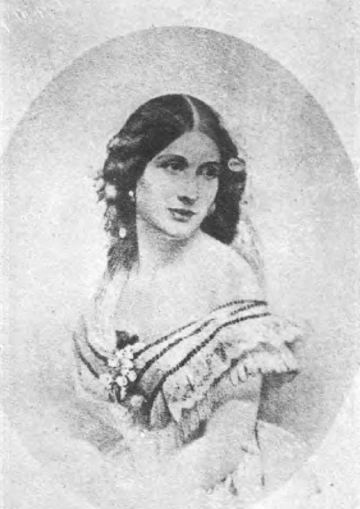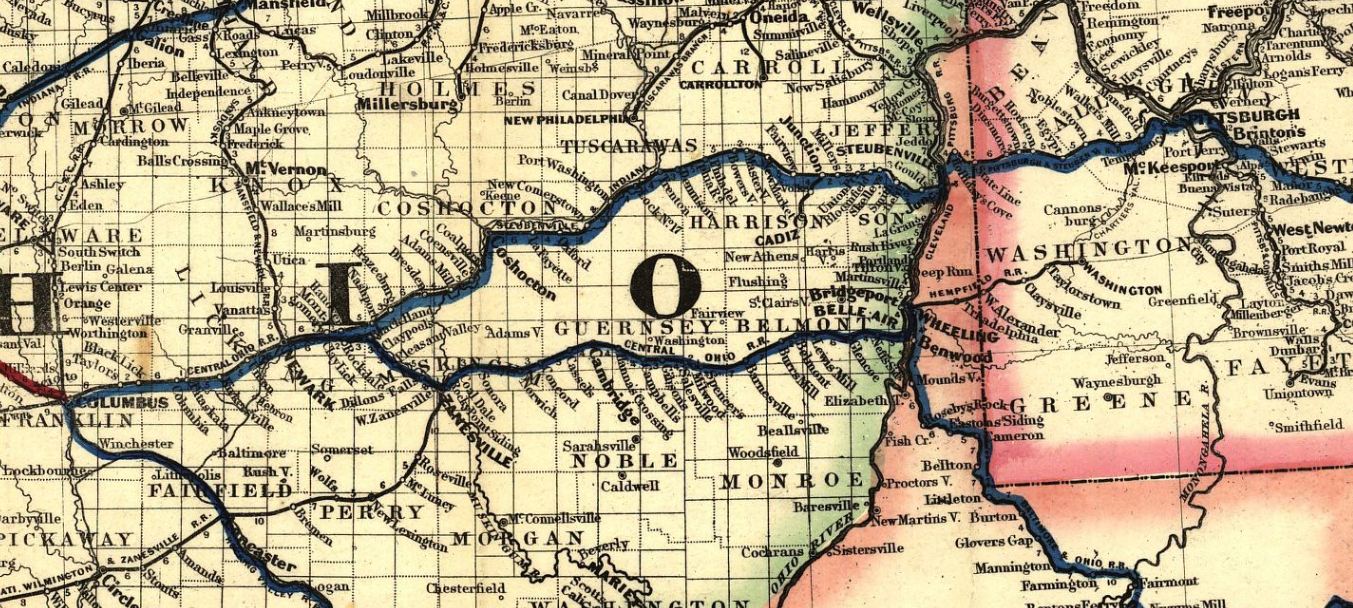Laura Keene and the Bloody Dress – To Cincinnati
Posted By Norman Gasbarro on March 16, 2012
When Laura Keene and her travel party of Harry Hawk, John Dyott, and Manager John Lutz left Harrisburg after their release from arrest following their removal from the Northern Central Railroad train from Baltimore, their objective was Cincinnati, Ohio, where Laura was booked to perform Our American Cousin on the Monday following the fatal Friday engagement at Ford’s Theatre. Lutz surely wired ahead to the manager at Wood’s Theatre that Laura could not possibly make that performance and that the group was on its way to Cincinnati. Cincinnati had already declared a period of mourning to last until Thursday, so the plan was to get there in time for that performance (scheduled as She Stoops to Conquer) and perhaps have some time to relax and wind down after the harried flight out of Washington that began some time within the 48 hours following the assassination.
At Harrisburg, the company trunks and Laura’s piano had to be loaded onto the Pennsylvania Railroad train to Pittsburgh. Lutz made these arrangements after he purchased the tickets. The dress that Laura wore in Act III of Our American Cousin was in one of Laura’s trunks. She was carrying the dress because she planned to wear it in one of the performances at Wood’s Theatre in Cincinnati. There was no indication from how Laura was acting on the journey to Cincinnati the dress was damaged beyond use – or for that matter, damaged at all.

Wood's Theatre, Cincinnati, Ohio
Getting to Cincinnati involved crossing the Allegheny Mountains and winding around the Altoona Horseshoe Curve which had been completed in 1854 as a means of decreasing the grade to the summit. The route taken to Pittsburgh was most likely as shown on the map below (blue line):
Laura was not well and the journey over the mountains of about ten hours or more surely took much out of her. Her declining health was constantly noted by her biographer, Ben Graf Henneke, but somehow she continued to pick herself up and move on. She did need frequent periods of rest and recovery and this is also reported by Henneke. Without John Lutz to protect her, she surely would never have been able to leave Washington after the assassination. What appeared to be driving her now was her anger at what John Wilkes Booth had done to the image of theater people and what John Lutz thought should be done to help re-build the image. Part of the plan hinged on the the public’s acceptance of the story that she had cradled Lincoln’s head in her lap. The image of Laura doing all she could to assist after the fatal shot – the tableau created by that scene – would haunt her to her dying day. She never spoke of it, but others did. And, the likelihood that it actually happened is very remote.
For the long train journey to Pittsburgh, a sleeper coach may have been available. Henneke describes the primitive accommodations:
Sleeping accommodations were made up by a brakeman. He turned over every alternate seat-back. dividing the car into a series of compartments or near-compartments. Then in each section he fitted from seat to seat a base of boards thinly upholstered, and arranged thereupon the sheets, blankets, and pillows. A slightly longer platform, similarly padded, rested on the backs of the car seats and formed the upper berth. He hung around three sides of the sections flimsy and dingy curtain of some cotton stuff; and lowers and uppers were ready. (page 184).
At Pittsburgh, the choices were overland by rail or down the Ohio River to Cincinnati. Henneke believed that Laura preferred the river routes and under normal circumstances, Lutz may have obliged. But this travel was not normal. The other option was to go by rail to Columbus and from there get whatever connections were available to Cincinnati. The maps below show the rail possibility.
If the Ohio River route had been chosen, it would have been more logical to travel west from Baltimore via the Baltimore and Ohio Railroad, arriving at the Ohio River at Parkersburg, West Virginia. This would have avoided at least three difficult transfers and most likely, the group would not have have been arrested as they were at Harrisburg. Whether the choice to go to Harrisburg was made because Harrisburg offered more options (escape to Canada included), or because specific trains were not running at times to make needed connections, is not known at this time.
We don’t know exactly when Laura Keene and her entourage and luggage arrived in Cincinnati but we do know that they performed on Thursday evening less than a week after the assassination. Much of the route from Harrisburg to Cincinnati is a matter of speculation with possibilities of travel given above, absent the schedule and times.
Laura’s specific health maladies are also a matter of speculation. Henneke waits until nearly the end of his biography of Keene to divulge a specific symptom that dramatically revealed itself while she was performing at a small town in Pennsylvania. But since Laura Keene kept her health matters a closely guarded secret, we probably never will know for sure what ailed her and what ultimately caused her death. Suffice it to say, that on the night of the Lincoln assassination her health was in rapid decline and she was unable to do half of shat she could do just a few years before. Following the assassination, things got worse for Laura’s career and for her health. Moreover, she had to rely upon others for nearly everything. Fortunately for Laura’s posterity, those who did for her made it seem that she was doing for herself, and for that loyalty, they were rewarded.
In the post tomorrow, some specific stories will be told of the “bloody dress” in Cincinnati.
The portrait of Laura Keene shown at the top of this post is from very early in her career- as she wanted to be remembered – and not as an aging actress with health problems. A copy of this picture is available in the free download of the first biography of Keene, by John Creahan.
 ;
;






Comments